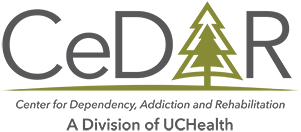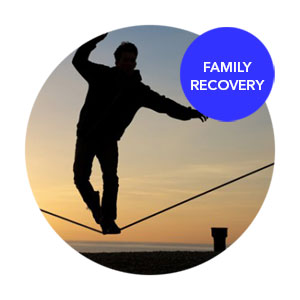FAMILY RECOVERY
Listen to the audio version of this article:
Support vs Enabling
All families are supportive. The deeper question is “What do they support?” Do they support recovery efforts or continued addiction? Of all the people we see in outpatient or residential settings, we ask them how their family feels about their current treatment. The overwhelmingly common answer is something to the degree of “very supportive.” So why do so many people have ongoing conflicts with family about support vs enabling?
Our work to better understand family system needs and therapy goals is imperative if we’re going to reach long-term recovery for that individual. Recovery always connects back to this concept of attachments and the close attachment patterns of the family will make or break someone’s healing from addiction. There is a big difference between support vs enabling and this article will look deeper into these core topics.
Support
By definition, support is a verb with meanings such as:
- bear all or part of the weight of; hold up
- give assistance to, especially financially; enable to function or act
Both of these phrases seem appropriate for our purposes when discussing support within a family system. The concept of holding up seems very accurate for our people just as giving assistance is also a common theme. Interestingly, the most intriguing part of this definition is quite subtle – the phrase ‘bear all or part of the weight.’ There is an infinite difference between holding up ‘all’ compared to ‘part’ of someone.
Families who support poorly have good intentions, but seem to struggle with the spectrum component. How much support is the right amount to foster lasting health change? How much support is too much, such that it discourages the addicted individual from making changes and strides of their own? A simple answer for this is to provide assistance to someone for something that person can’t do for themselves. There is a large difference between the words can’t and won’t!
Enabling
The term enabling is commonly used in family programs of addiction treatment centers. The basic addiction definition of enabling is to prevent someone from experiencing the negative consequences of the addiction. This is in contrast to the ‘tough love’ approach or the allowance of what we would call natural consequences.
The most extreme example of enabling behavior clinicians see is with family members actually purchasing heroin for their children out of agony that the child would experience opioid withdrawal. The withdrawal is the natural consequence of continued heroin use, and the family member is deeply invested in alleviating such suffering. The problem of this situation is that the natural consequence of withdrawal may actually lead to motivation for change. Instead, the consequence gets quickly lifted by the parent and the heroin addiction continues on.
Does your loved one need rehab?
The scariest message for those families to hear is that many of those children still die from heroin overdoses. Enabling never actually lead to real healing. For every year that a severe addiction continues, the addicted individual carries some risk of death. In terms of lethal addictions such as heroin dependency, the dark fear of families is often this death under a bridge scenario. A parent may imagine homelessness, poverty, street violence, or other painful situations that they couldn’t bear for their child. The darkest truth of all is that those children don’t actually die in misery under a bridge. They die on their parents’ basement couch.
Examples
What are some other very common examples of enabling from families? Paying the rent when someone spent all of their money at the bar this month. Paying for a high-end attorney to prevent someone from going to jail for a 3rd DWI offense. Covering for a teenager in school who missed class due to substance use.
There are even other more psychologically sophisticated forms of enabling. We have had multiple families take an aggressive, critical stance at our treatment center when their family member leaves spontaneously. They believe that we are to blame for the failed treatment. The addicted person is often quite critical of our treatment. Family members team up with that criticism, rather than acknowledging that the sick individual is the person.
The Right Amount of Support
So we’ve established that the goal is health and change as a result of consequences. There is a middle ground to help improve this pattern within your family. The answer is not necessarily “Support or no” but rather “How much support promotes legitimate change?” One common theme amongst families is that they want their loved one to have an opportunity. Examples of permanently lost opportunity may include felonies, severe diseases, or death. Intervening to provide support amidst those dire situations may be appropriate support vs enabling.
An example of a program which provides one form of enabling, but does it in a tactful and evidence-based fashion, is harm reduction centers. Through needle distribution, overdose kit distribution, and safe injection site access, IV heroin users are better able to avoid the permanent consequences of severe addiction – namely chronic infections and overdose death. Acquiring HIV will severely limit things in a person’s life, hence harm reduction centers are ok in briefly enabling an IV heroin user if it can prevent a permanent disease from forming. That example of enabling is done in a structured way, by an expert clinician, and with the goal of promoting treatment.
Applying this to Your Family
Which things have worked in the past for your family? That question can be a good place to start. If you paid the rent for your brother because of his alcoholism, did he ever pay you back? Did the alcoholism continue in the same way next month, even to the point of him asking “to borrow” money once again for rent? This can be where the behaviors of the family start to actually change. You may realize that your generosity, be it money, emotional support, or time, goes nowhere! Frustration in this sense is quite normal and we can use this to help adjust your behaviors.
Often, one of the best interventions is to provide kindness and emotional support, but not money or specific service. This position can be quite difficult for families, as the addicted individual may be highly desperate. Stand firm with your boundary and acknowledging that you want your generosity to go towards something meaningful. From here you can actually gauge where your family member is on a change continuum. By saying something like “we’ll support you seeing a therapist, but we won’t pay for your rent anymore,” you place a boundary on the addicted individual. Acceptance of that opportunity will be highly positive. Rejection of that option shows you where the person is really at.
Stand firm with your boundary! We support recovery not continued addiction!




